[This is the fifteenth entry of 18 in a game design journal series introducing Spheres & Farms™, a game about real estate brokerage branding in the Puget Sound region. Previous | Next]
While there is no “money” in Spheres & Farms™, there are costs that limit the brokerage offices’ ability to hire, operate, and expand in their pursuit of brand visibility. Abstracted values of net commissions, desk fees, and intangible values of community influence comprise to serve this purpose. These are not for scoring the game; for that there are Visibility Points (VPs)—to be discussed later under “Visibility points: accumulation and scoring.” Instead, the “currency” used for carrying out promotion and operations is termed “promotion & cost recovery (P&CR) points,” which are derived from the VP values printed on the location cards. Player/office point totals for both are recorded on the combined record track. This journal entry describes how listings are tracked and sold, and how P&CR points are scored, managed, and spent in the course of play.
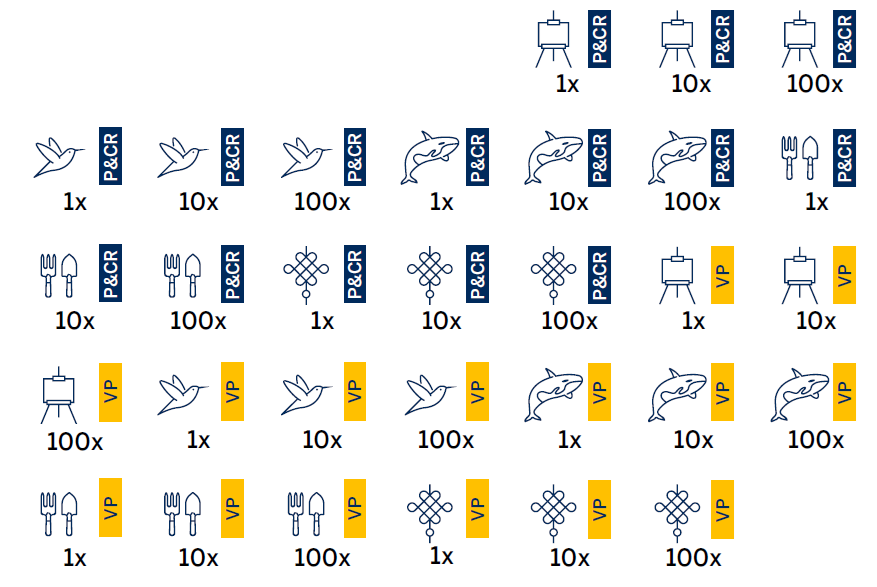
Each player begins the game with one office and a package of P&CRs attached to that office. These are to be expended in setting up farms for the agents that player draws, or to establish one marketing sphere for each eligible agent. Players can be the judge of whether it is to their advantage for qualified agents to begin with marketing spheres or with geographic farming.
P&CR points represent the combination of commission earnings net of taxes and profits, short-term brand visibility, and agent eminence, ambition, and effort expended in building the broker’s personal brand through a combination of geographic farming and marketing spheres. This value is established by winning listings and sales. Every time a sale is won, the P&CR value for that location is added to that office’s current P&CR total on the combined record track. From there, it may subsequently be converted into new promotional activity by that office in the same or different locations; e.g., for expenditure on farms, listing promotion, social media, and events. (This is why these scores are styled as promotion and cost recovery points.)
Gross P&CR points earned upon sale vary by location in direct proportion to the VPs for those locations. The P&CR point value of each location card is normally 1/10th of the printed VP value for that card. The net P&CR points earned upon sale are reduced by promotional costs of each listing, which are subtracted from the office’s current total when the listing is promoted as it ages. Farm maintenance is also paid from starting or accumulated P&CR point totals.21
P&CR points do not factor into victory conditions, and there is no benefit to having accumulated a high balance of them at the end of the game. However, a player cannot spend P&CR points “into the hole.” Once they are depleted, they can only be replenished by winning sales. This will force players to mindfully allocate them as resources to win new sales, as carefully as they would manage these brand assets in real life.
The shared basis for VPs and P&CR points earned (not spent) is a formula factoring in the numbers (not the currency-denominated volume) of sales in the target location and its adjacent locations. This is important because again, price plays no part in these point schemes. P&CR points for a location with a very high median price may be lower than for a more remote area with a far lower median price.
In real life, there is likely a difference between the two in the value of earned commissions in excess of what is needed to bear the cost of promotion and operations. This difference is profit shared by the agents and their brokerages, and so is effectively extracted from the game. That profit is captured by those parties and is neither returned to nor reinvested in operations. Some small share of that profit can be recycled into influence in the agent’s marketing spheres. Beyond that, it is a personal reward to the agents and brokers working in those more affluent areas, and contributes little to attaining the objective of brand visibility.
At the same time, the P&CR-denominated expenditures for promotion and operations vary little within areas of similar concentration (H, U, R, and E). That is because those are expected to be shaped more by the number of transactions than by the prices of homes for sale. Expenditures for events, social media, and publications are unlikely to differ among locations of similar density. These expenditures are fixed by the subject location card density type on the listing sales and aging table, as shown below.
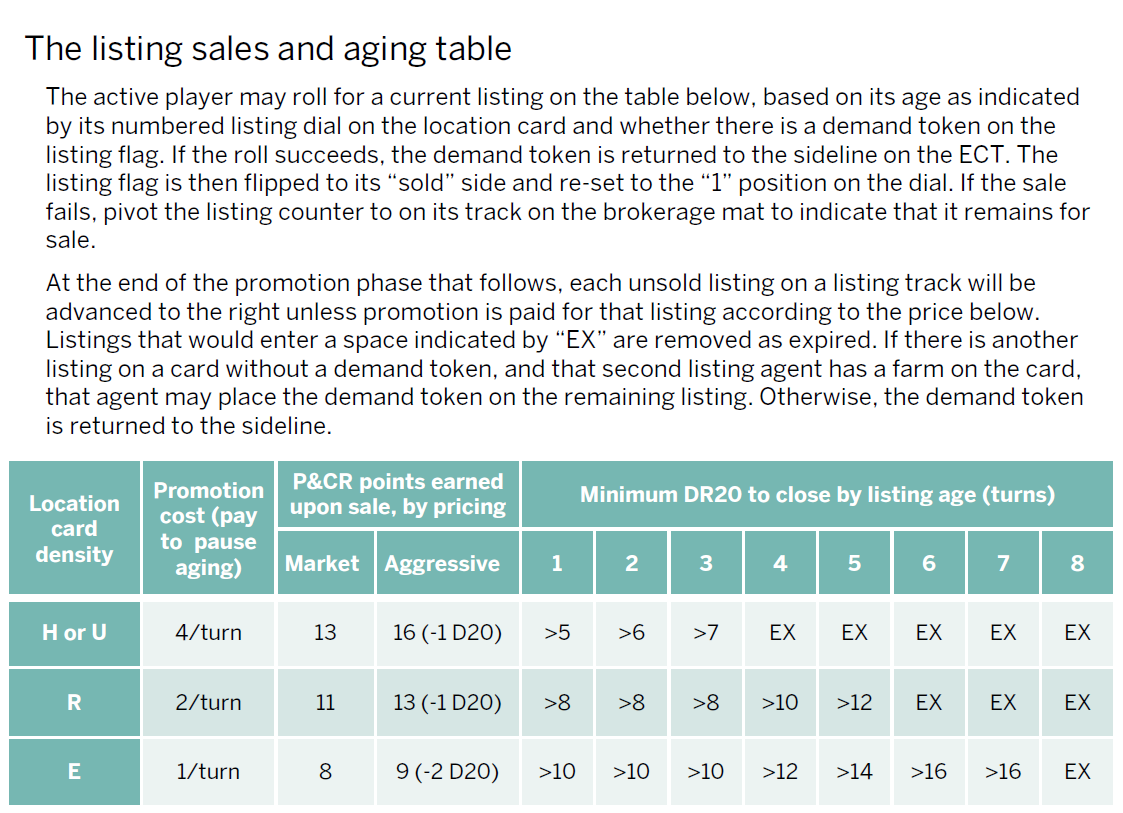
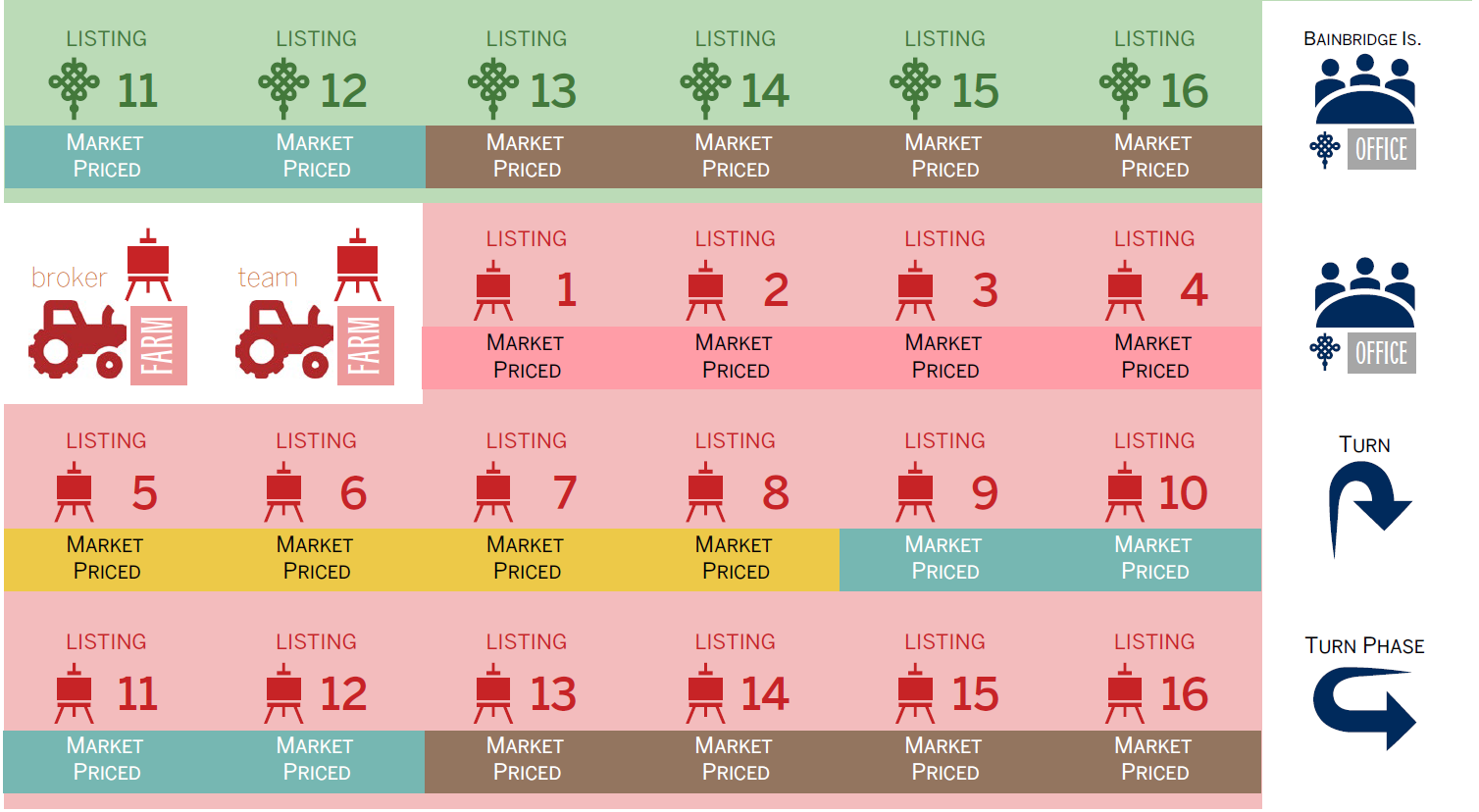
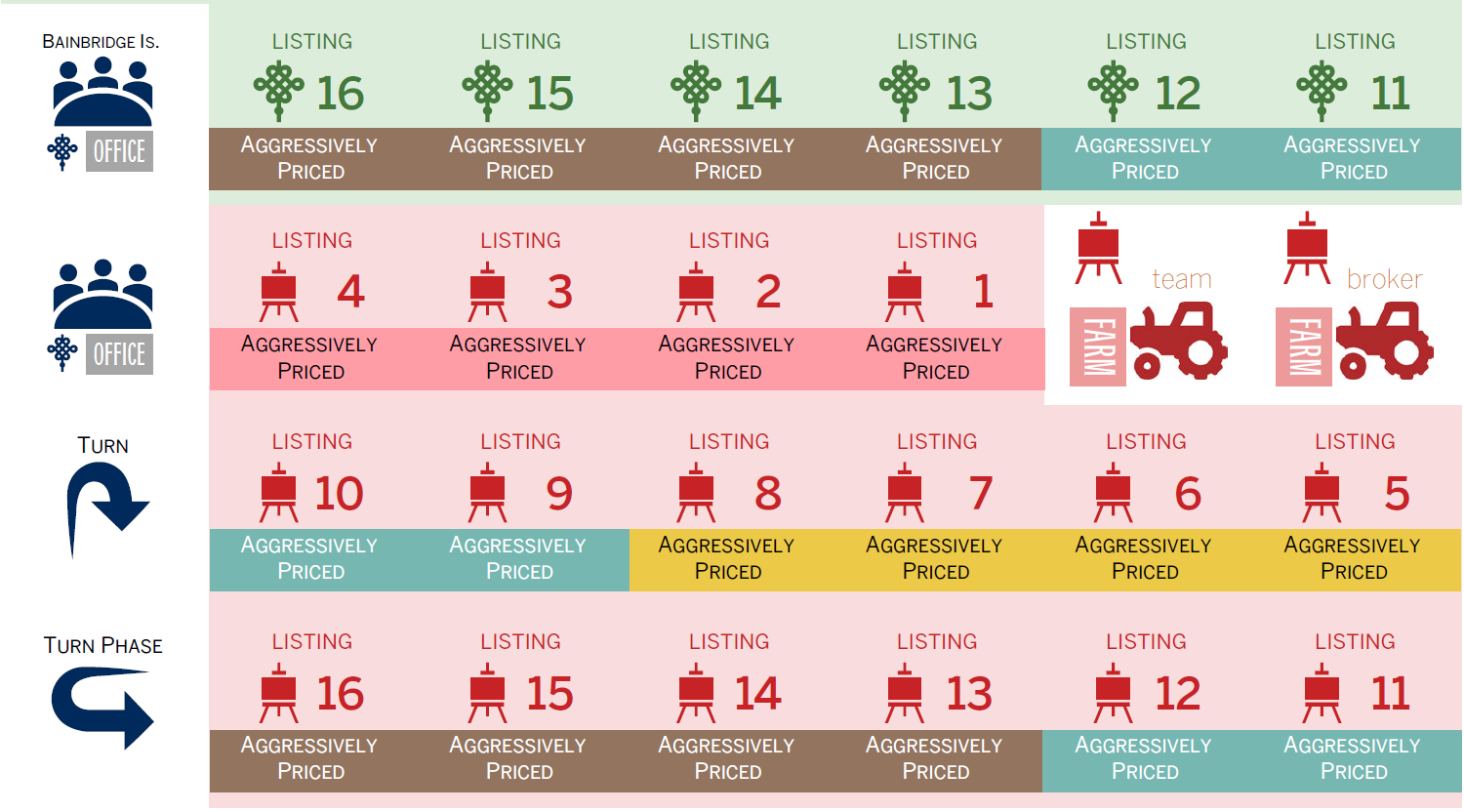
Prospecting and selling phases
Selling precedes Prospecting Phases in each turn. This is desirable to clear off the listings of earlier turns before placing new ones in the listing phase(s) that follow, preventing congestion on brokerage mats and location cards. It also allows any actions with respect to current listings, including the effects of any promotions, to be processed before new listings are added.
The number of Prospecting Phases will be influenced by the current economic phase on the ECT. There are three listing phases in a boom phase, two in a growth market, and only one in a bust. This is sufficient to reflect the effects of market demand on both listings and sales. It increases the frequency of listings simply by offering additional rounds and draws of listing cards. Once listings are placed, all are subject to the selling process at the top of the following turn. When a (downward) shift in the economic cycle occurs, current listings will sell, but will not be as quickly replaced in the Prospecting Phases that follow. (We may imagine that already-committed sellers may have needed to reduce prices or offer other concessions to win those first sales after the economic phase shift, but no such adjustments impact brand visibility or game play.)
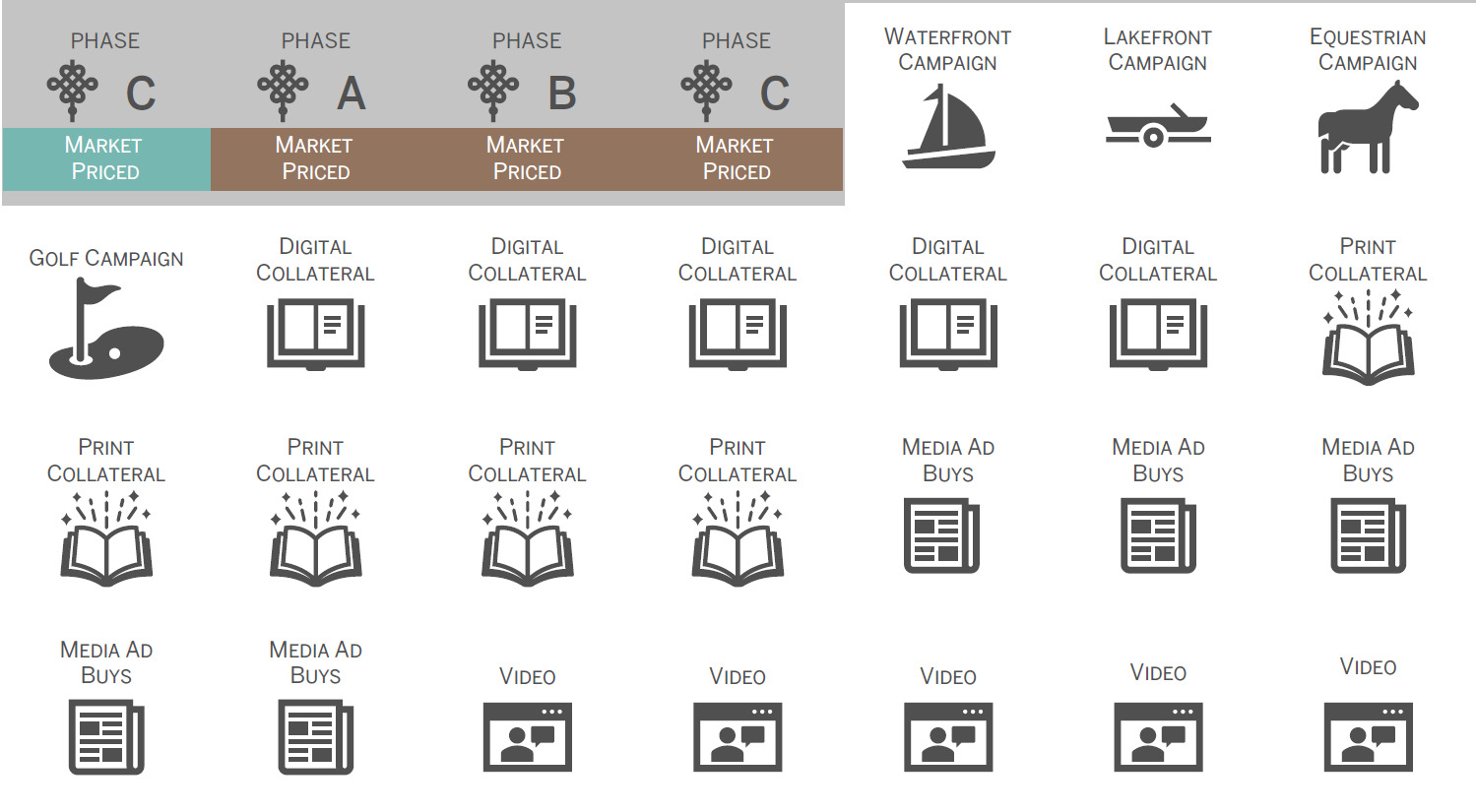
Tracking, promoting, and closing listings
During the Selling Phase, the player rolls a DR20 (the sum of two ten-sided dice) for each listing based on its position on the listing agent’s listing track, comparing the result to the same numbered column on the listing sales and aging table. The dice roll may be subject to modification by events, or by aggressive pricing of that listing based on which side of the listing counter is face up. As shown in the “aggressive” column under “P&CR points earned” on the listing sales and aging table, aggressive pricing causes a -1 DRM22 in H, U, and R locations, and a -2 DRM in E locations.
As part of the above procedure, the active player also notes that listing’s numbered flag on the location card’s listing dial, and whether there is a demand token on that listing flag. If the roll succeeds, the demand token is returned to the sideline on the ECT. The listing flag is then flipped to its “sold” side and re-set to the “1” position on the dial from which it again advances each turn. If this is the player’s first sold listing on that location card, the player adds the VP value of the card to their accumulated VP total on the combined records track, and 10 percent rounded down of this amount to their accumulated P&CR points. (Later, if at any point the player has no current or sold listings on the location card’s listing dials, these VP points, but the the P&CR points, may be deducted.)
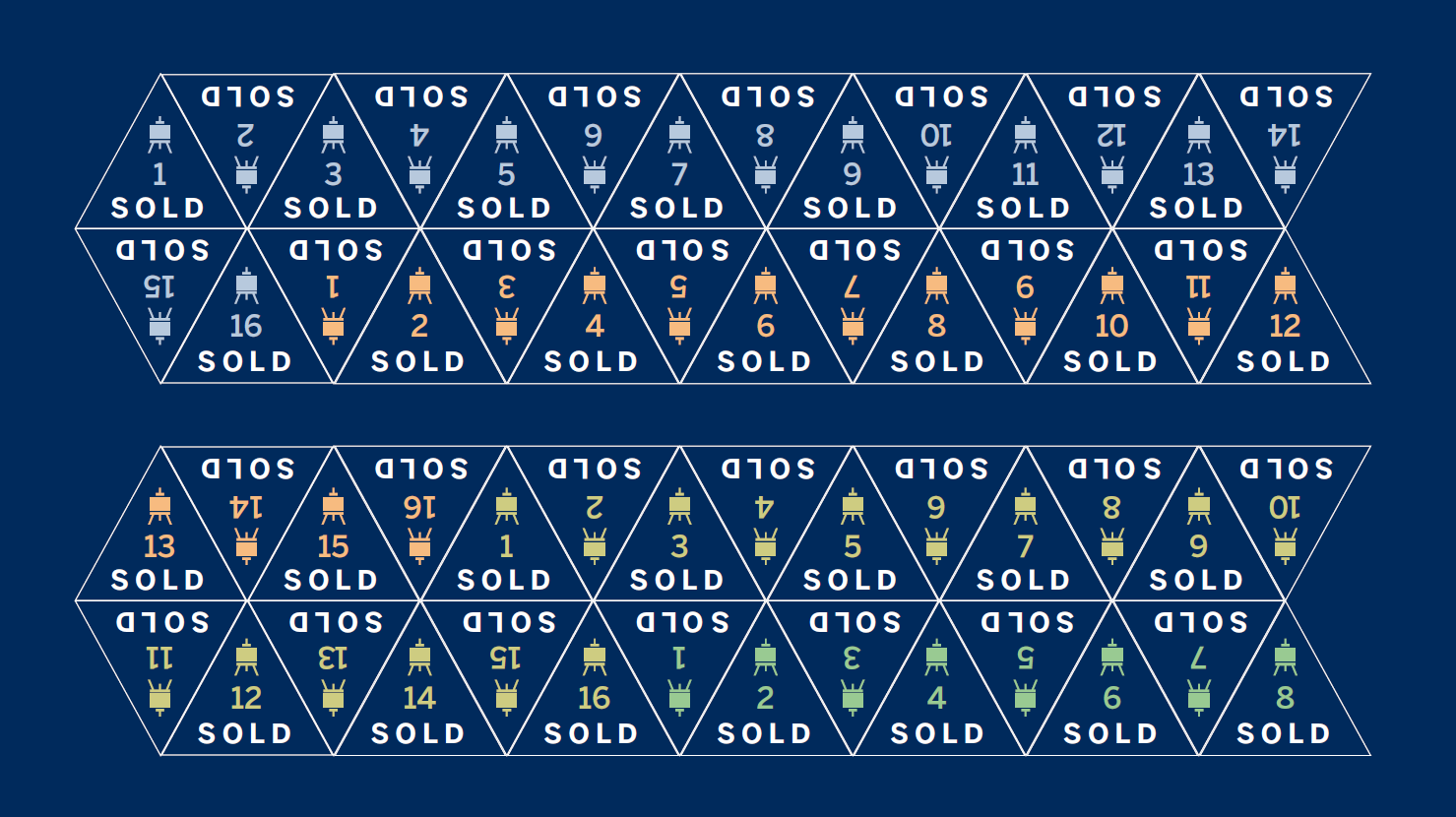
If the sale fails, pivot the listing counter to on its track on the brokerage mat to indicate that it remains for sale.
At the end of the Selling Phase, each listing remaining on the player’s listing track will be active through the end of the turn unless it expires. New listings are added during the one, two, or three Prospecting Phases immediately after the Selling Phase. These listings are won following the procedures described in “Prospecting for Listings and Incurring Events.” In the Promotion Phase that follows the Prospecting Phase(s), every active listing is advanced by one space unless promoted; this includes all listings added this turn. Listings advance to the right along the listing track until they expire. The only way to delay expiration is to sell the listing or promote it during the Promotion Phase.
To promote a listing normally, a player must pay the promotional cost shown on the listing sales and aging table. However, promotional event cards allow one promotional fee to be paid for a limited number of listings on location cards with certain amenities, like waterfront, equestrian, and golf properties. If these events are played, a marker to that effect is placed on the office card. Together with listings for which the player pays promotion individually, all relevant listings on that player’s brokerage card and up to five listings of other players in locations that feature those amenities may avoid being advanced at the end of the Promotion Phase by paying four P&CR points for all.
Listings that are not promoted this turn are advanced to the right along their listing tracks, and their matching numbered flags on their location cards are also advanced clockwise on their listing dials. Note however, that there are only five points on the listing dials; each listing stops advancing at the fifth point on the dial while continuing to advance on the listing track until it expires or is sold.
The flags for each listing on a location cards are flipped to their “sold” sides when sold. Each is then advanced with all other sold and current listings on that card’s listing dials each turn until reaching the fifth point, when the “sold” flag must be removed. At the moment when an office’s last current or sold listing flag is removed from a location card, the VP value of that location is deducted from that player office’s current accumulated VP total on the combined records track. In no case are P&CR points deducted.
21 The previous entry, “Game components; agent counters and cards” includes a discussion about whether and how to incorporate agent attributes into gameplay. One way to do that is to modulate the P&CR point value of an agent’s listings in certain categories of locations, or in specific locations, according to OCs or even the current economic cycle. Specifically, the proportion of VP value would be the means of modulation, raising it from 10 percent to 20 percent or more of that location card’s VP value for that agent.
22 DRM = die/dice roll modification.
Schedule of entries
- Spheres & Farms™ design and strategy journal: Introduction
- The agent and brokerage as real estate brands
- How price and place matter
- Visualization, testing, and learning
- Spheres & Farms™ game summary
- Game procedures and routines in the context of agency law and practice
- Game components; agent counters and cards
- Farming methods; market selection
- More about marketing spheres; the economic cycle track (ECT)
- Economic cycle effects on marketing spheres
- Location cards: the Spheres & Farms™ "game map"
- Location card contents, office locations and maintenance
- The prospecting/event card deck
- Prospecting for listings and incurring events

